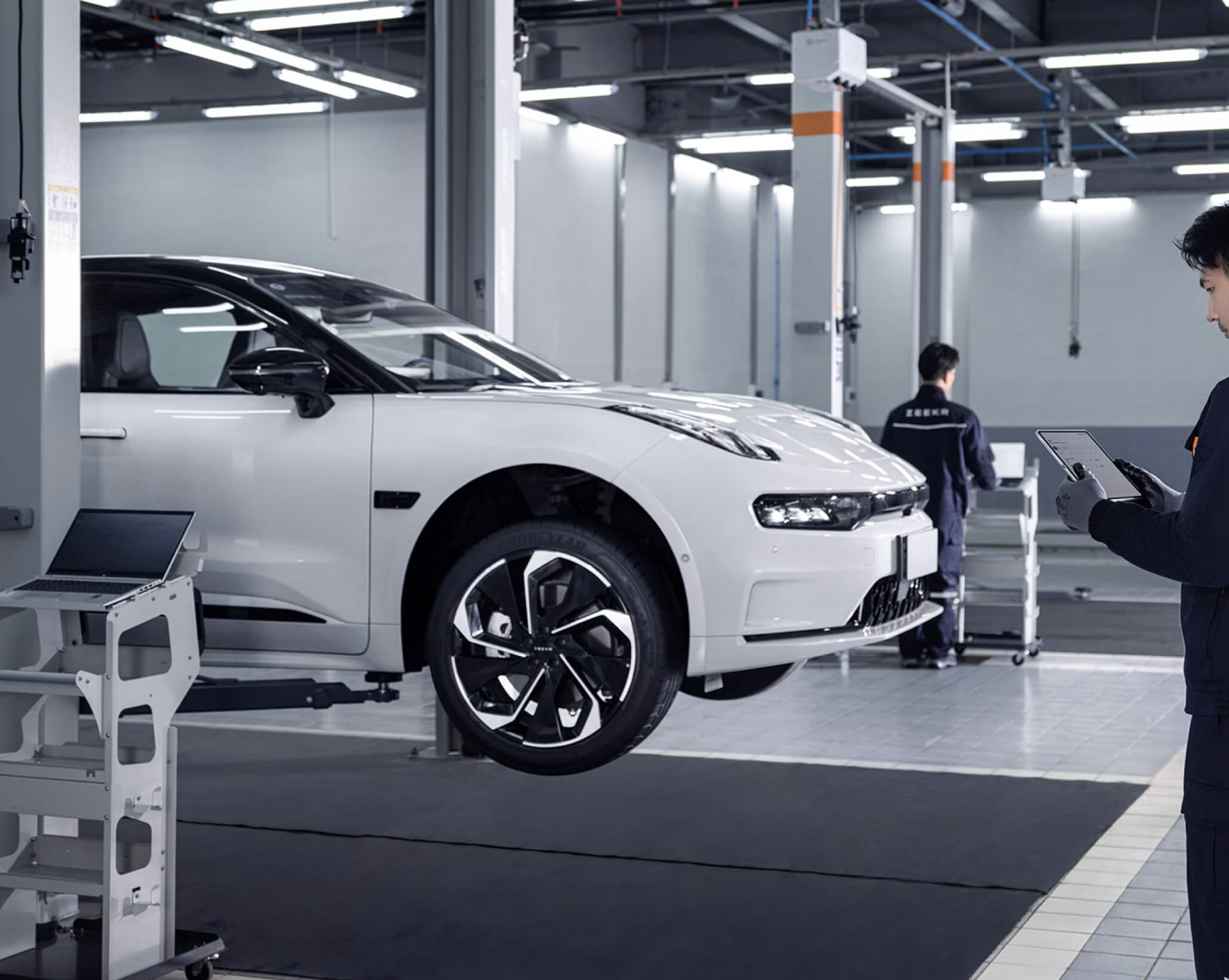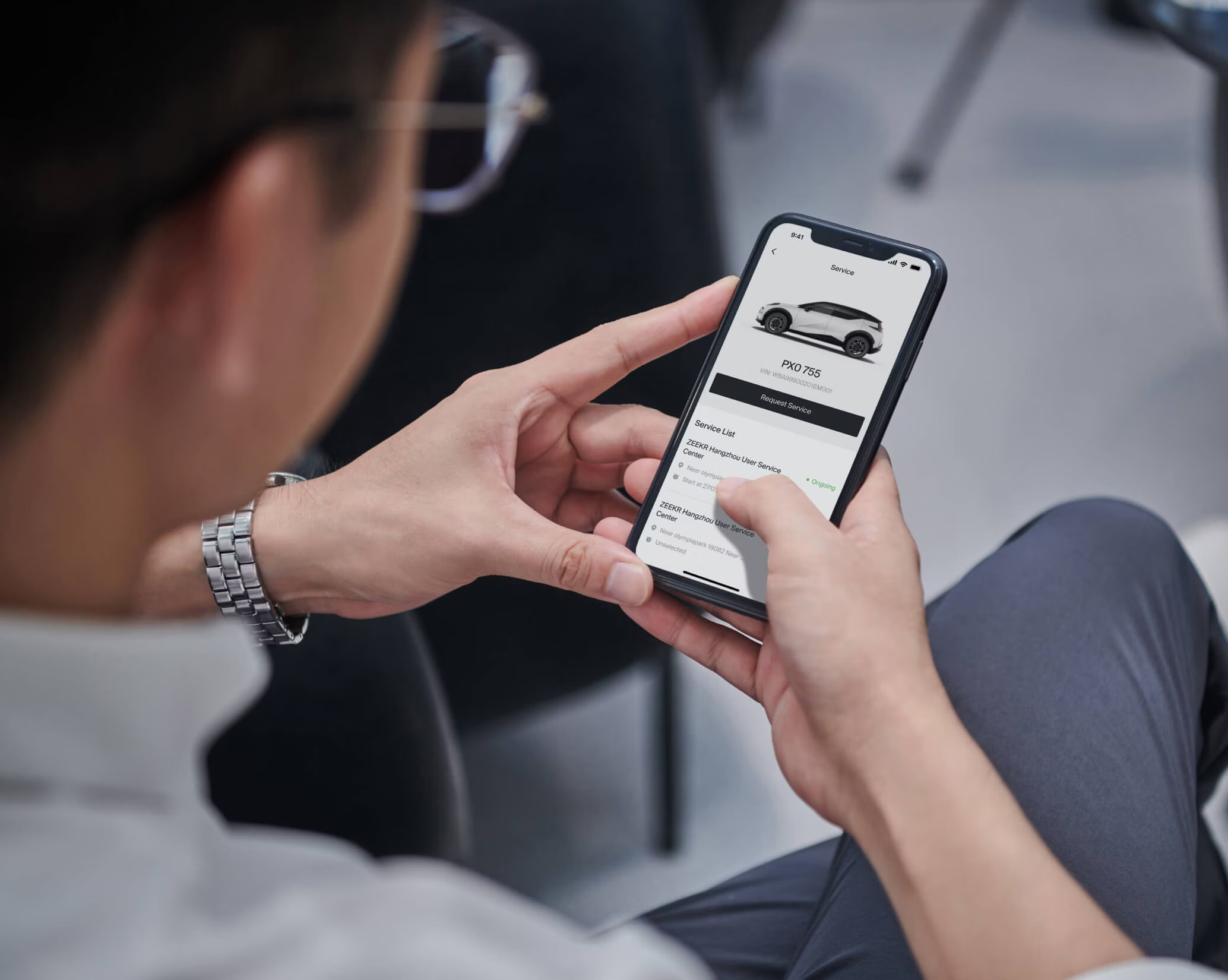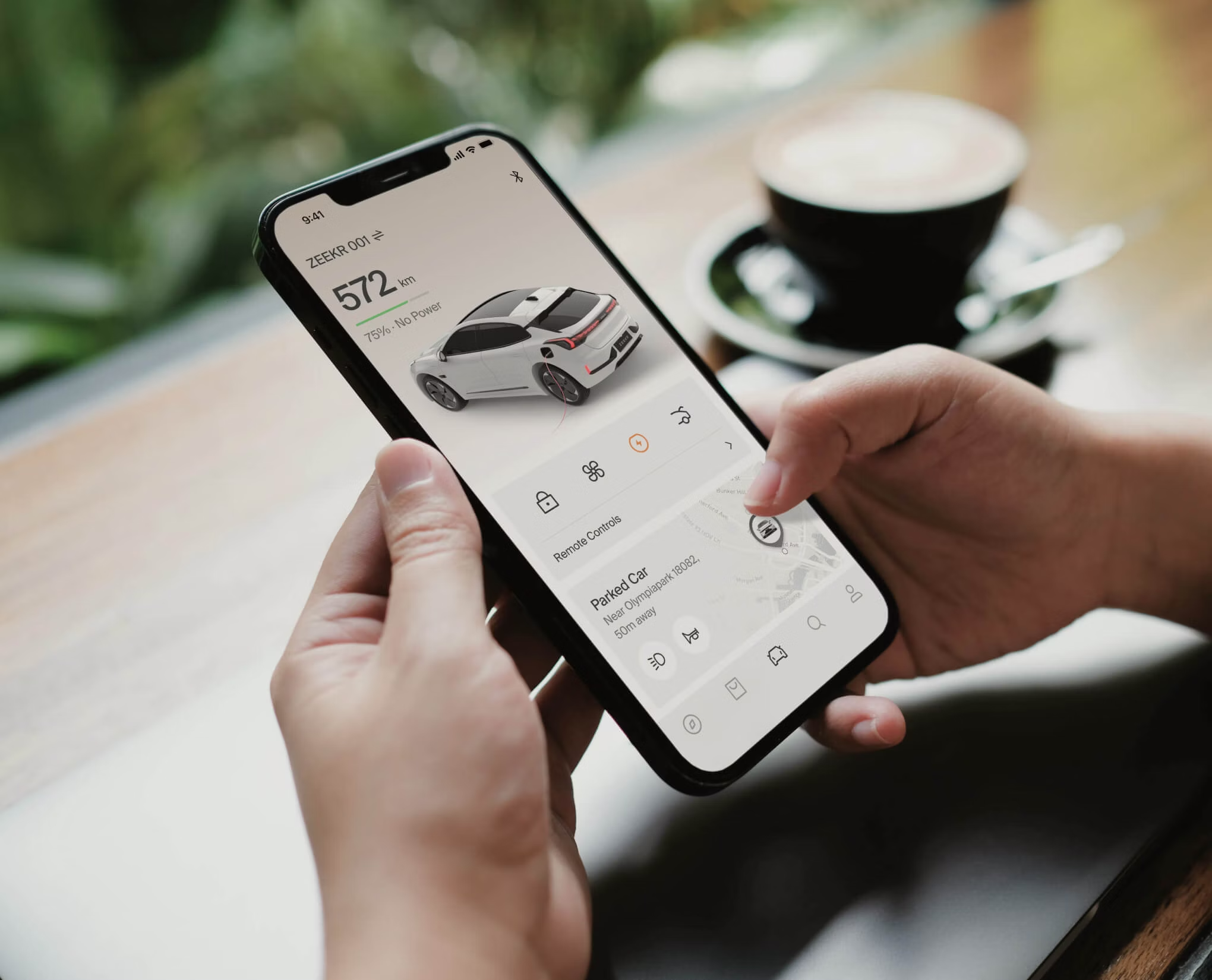Service Key
Zeekr Techology Europe
Overview.
In modern car ownership, ensuring seamless service experiences while maintaining security is crucial. The Service Key project was designed to address the inconvenience of physically handing over a car key for servicing. By introducing a digital, temporary key, owners could share controlled access with service technicians, making the process more efficient and secure.
As a UX Designer at Zeekr, I collaborated closely with product managers, engineers, and service teams to conceptualize, refine, and validate this solution. The initiative was presented to Zeekr's leadership, including the CEO, to align with the company’s digital vision.

Understanding the Problema
Vehicle servicing can be a cumbersome experience for owners, requiring them to be physically present to hand over their keys. Many expressed concerns about security and trust when leaving their vehicle with third-party service providers. Through user interviews and surveys with over 600 EV owners, we identified key frustrations:
- The hassle of coordinating service appointments.
- Concerns over security and access when leaving a car at a workshop.
- A lack of transparency in vehicle handover and return processes.
These insights drove us to create a digital solution that could eliminate physical key exchange while maintaining strict security protocols.
Designing the Solution
With the problem space defined, we moved into ideation and prototyping. The goal was to design a digital key-sharing experience that was intuitive and reliable. We structured the solution around three core principles:
- Seamless Digital Key Sharing – Users could send a temporary digital key via the Zeekr app to a trusted technician.
- Controlled Access – Owners could restrict functionalities, such as locking/unlocking, engine start, or driving permissions.
- Auto-Expiration & Revocation – The key would automatically expire once the service was completed, removing any security risks.
Using Figma, we iterated on multiple prototypes, refining the user experience based on feedback from internal stakeholders and selected customers.


Collaborating Across Teams
The development of the Service Key required close alignment between UX, engineering, and product strategy. To structure our workflow efficiently, I created a set of Epics in our backlog, ensuring that the user experience and technical feasibility remained aligned.
Regular workshops and design reviews with engineers allowed us to refine constraints and usability challenges early on. Additionally, we conducted usability tests to validate whether users could comfortably share and revoke digital keys without confusion.
One of the key moments was presenting the solution to the CEO and leadership team, highlighting how this feature would position Zeekr as an innovative leader in smart vehicle access. The feedback was overwhelmingly positive, reinforcing our direction.
The Impact
The Service Key successfully addressed the pain points identified in our research. By reducing the need for physical key handovers, we streamlined the vehicle servicing process while enhancing security. The key benefits included:
- Improved convenience – Owners no longer needed to be present at the workshop.
- Enhanced security – Limited access prevented unauthorized use of the vehicle.
- Better transparency – Digital logs tracked who had accessed the vehicle and when.

Final Thoughts
This project was a testament to how user-centered design, cross-functional collaboration, and strategic leadership alignment can drive meaningful innovation. The Service Key not only improved the service experience for Zeekr owners but also positioned the brand as a forward-thinking player in smart vehicle technology. Moving forward, this foundation can support future advancements in secure digital access solutions across multiple use cases.

Due to confidentiality, some research, discussions, and design details can't be shared. This case study covers the process, challenges, and solutions.